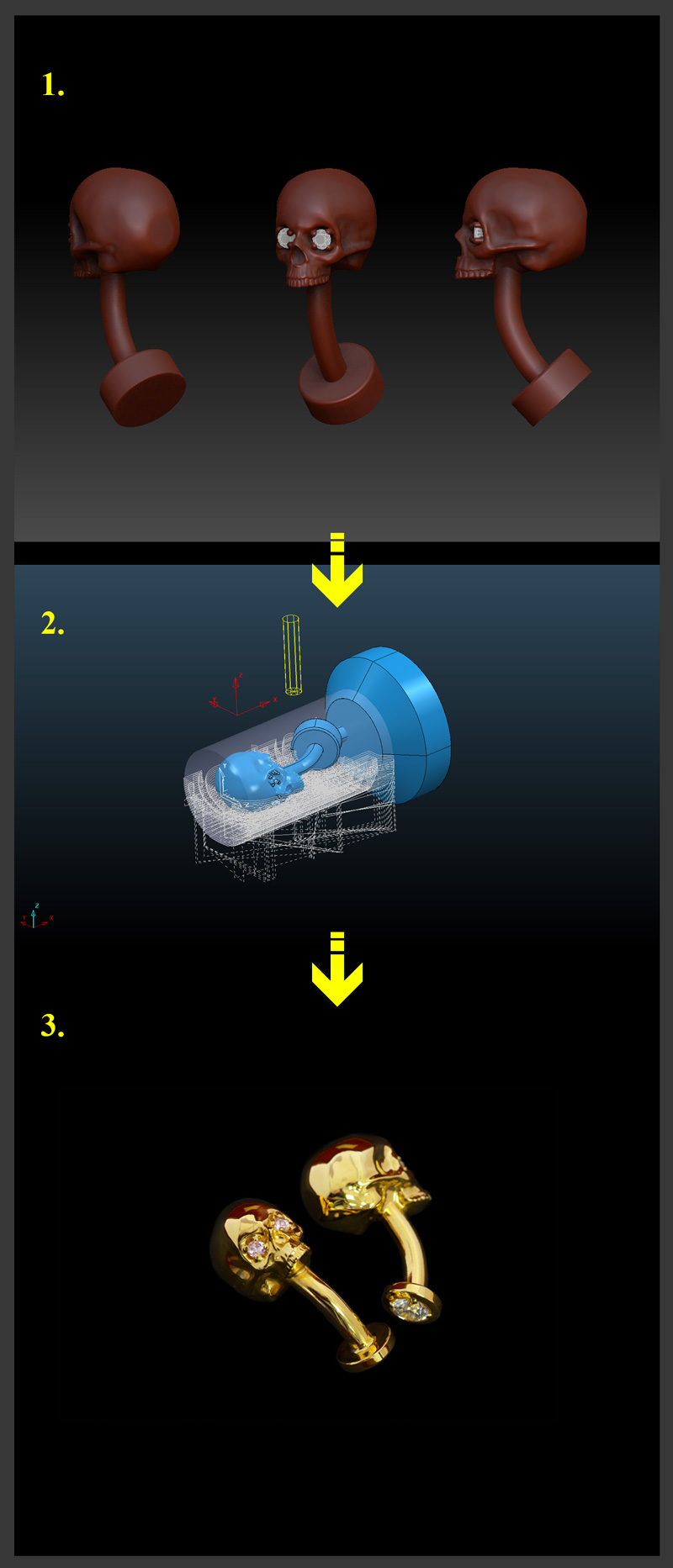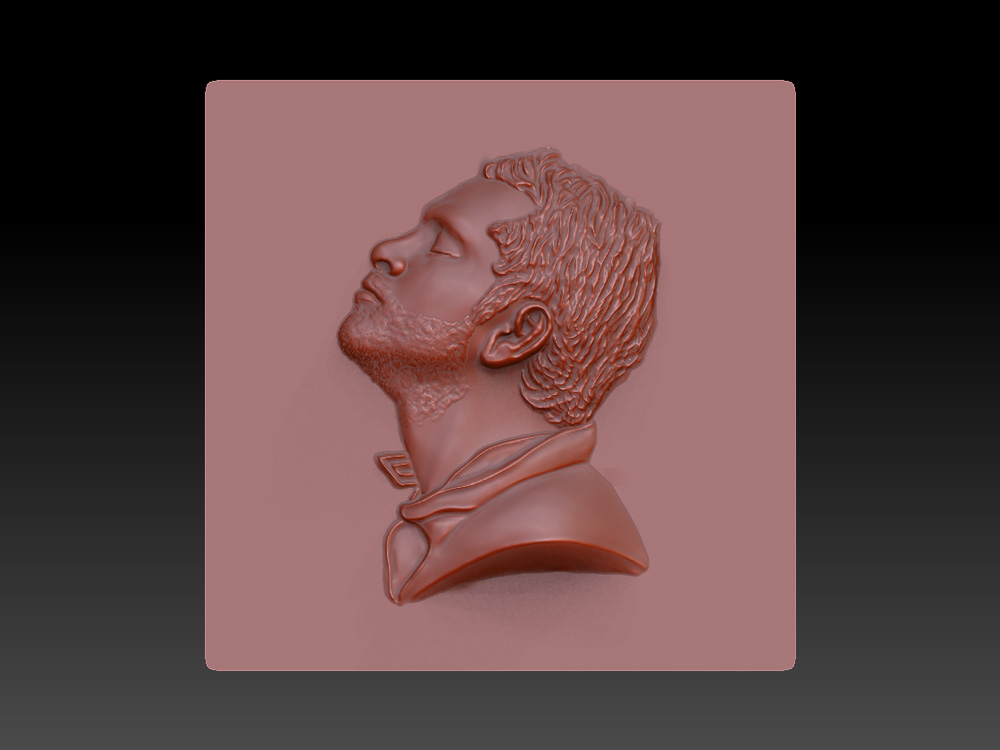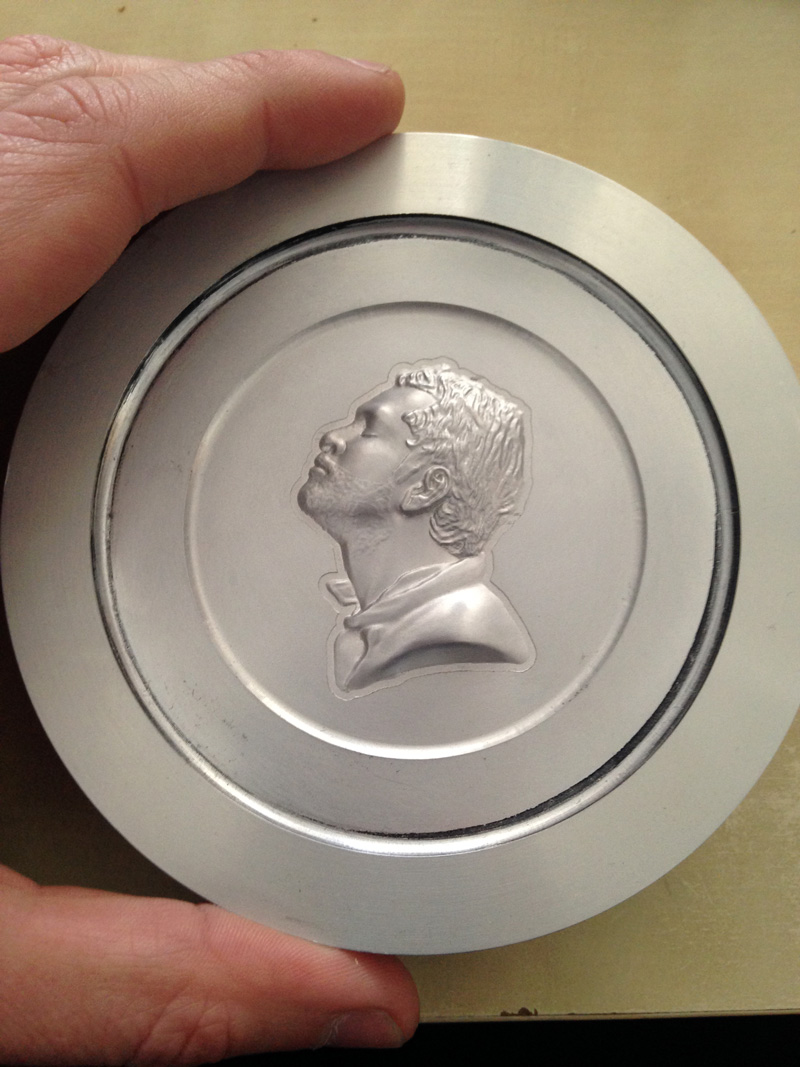Thanks for all the good info Angus  ! Definitely helped!
! Definitely helped!
I’ll be CNCing my first die today and it looks good in the computer anyway.
I have a few follow-up questions about sculpting reliefs in Zbrush however.
First, how do you keep the sculpt within the mask? I had a mask around the outer border of my design, but things like inflate and clay would sometimes push it out beyond the masked area. I tried to fix as I went along, but I missed it in a couple spots.
Another problem I had along that masked edge was not getting the good smoothness you did. Afterward I thought if I remeshed and put some polyflow along that edge, it would’ve helped. Do you have any other ideas?
Another problem along that same masked edge was that I pushed some of the sculpt behind the plane. I though I cleaned it all up, but I missed some of it, which Artcam was not happy with. How to prevent or fix that issue?
Lastly, I’m wondering: Is there any advantage to sculpting in relief as opposed to sculpting in the round and then projecting onto a plane?
Thanks for all your time.



 small_orange_diamond
small_orange_diamond

 .
.